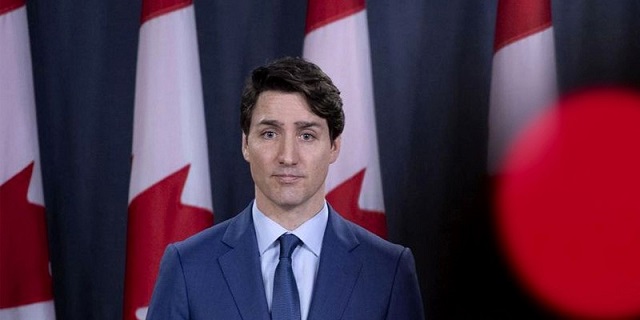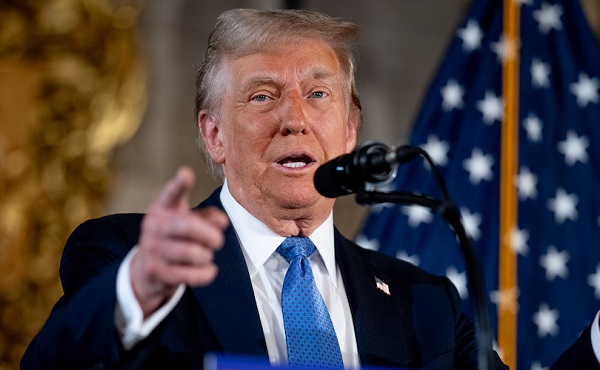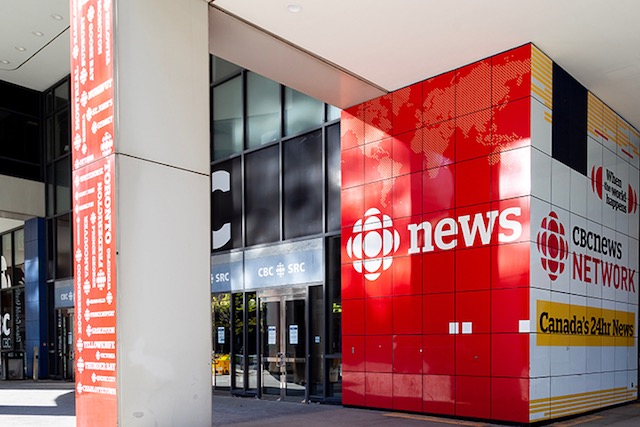Economy
Trudeau’s bureaucrat hiring spree is out of control

From the Canadian Taxpayers Federation
Author: Franco Terrazzano
Bureaucrats love to think of themselves as “public servants,” but who is really serving who around here?
Prime Minister Justin Trudeau added another 10,525 bureaucrats to the taxpayer payroll last year. Since becoming prime minister, Trudeau has added more than 108,000 new federal bureaucrats.
That’s a 42 per cent increase in the federal bureaucracy in less than a decade.
Ask yourself, are you getting 42 per cent better services from the federal government? Unless your paycheque comes from taxpayers, the answer is a big fat NO.
While Trudeau’s bureaucracy grew by 42 per cent, Canada’s population grew by 14 per cent.
That means there would be 72,491 fewer federal paper pushers had Trudeau kept growth in the bureaucracy in line with population growth.
It’s not just the size of the bureaucracy that’s ballooning – the cost is too.
The total cost of the federal payroll hit $67 billion last year, a record high. That’s a 68 per cent increase over 2016.
Trudeau gave federal bureaucrats more than one million pay raises in the last four years alone.
Since taking office, Trudeau also rubberstamped about $1.4 billion in taxpayer-funded bonuses to bureaucrats working in federal departments.
The bonuses were paid out despite the Parliamentary Budget Officer finding “less than 50 per cent of [performance] targets are consistently met.”
Then there’s the bonuses at failing Crown corporations.
CBC dished out $15 million in bonuses last year, while their President and CEO Catherine Tait whined about “chronic underfunding” and begged the government for more taxpayer cash. The CBC takes more than $1 billion from taxpayers every year.
The Canada Mortgage and Housing Corporation dished out $102 million in bonuses over the last four years, while Canadians couldn’t afford to buy a home. The bonuses rained down, despite the CMHC repeatedly claiming it’s “driven by one goal: housing affordability for all.”
The Bank of Canada dished out more than $60 million in bonuses over the last three years, even though it failed to do its one and only job: keep inflation low and around two per cent.
The average annual compensation for a full-time federal bureaucrat is $125,300, when pay, pension and perks are accounted for, according to the PBO.
There are now more than 110,000 federal bureaucrats taking home a six-figure base salary – an increase of 154 per cent since Trudeau took power.
Meanwhile, data from Statistics Canada suggests the average annual salary among all full-time workers in Canada was less than $70,000 in 2023.
Here’s why all this matters:
First, it’s an issue of fairness. The last few years have spelled hardship for Canadians who don’t work for the government, but do pay the bills.
Countless Canadians were sent to the ranks of the unemployed, lost their business and struggled to afford rising rents and costly grocery trips.
They’re paying higher taxes so more highly-paid bureaucrats can take bigger paycheques.
Second, more than half of the federal government’s day-to-day spending is consumed by the bureaucracy. That means any government that wants to fix the budget dumpster fire must shrink the bureaucracy.
Let’s recap:
Taxpayers paid for 108,000 new federal bureaucrats. Taxpayers paid for more than one million pay raises over the last four years. Taxpayers paid for more than $1 billion in bonuses.
And bureaucrats barely meet even half of their performance targets – targets they set for themselves.
It’s clear Trudeau’s bureaucratic bloat isn’t serving taxpayers. It’s time to find a pin and pop Ottawa’s ballooning bureaucracy.
This column was first published in the Western Standard on July 202, 2024.
Business
Most Canadians say retaliatory tariffs on American goods contribute to raising the price of essential goods at home

- 77 per cent say Canada’s tariffs on U.S. products increase the price of consumer goods
- 72 per cent say that their current tax bill hurts their standard of living
A new MEI-Ipsos poll published this morning reveals a clear disconnect between Ottawa’s high-tax, high-spending approach and Canadians’ level of satisfaction.
“Canadians are not on board with Ottawa’s fiscal path,” says Samantha Dagres, communications manager at the MEI. “From housing to trade policy, Canadians feel they’re being squeezed by a government that is increasingly an impediment to their standard of living.”
More than half of Canadians (54 per cent) say Ottawa is spending too much, while only six per cent think it is spending too little.
A majority (54 per cent) also do not believe federal dollars are being effectively allocated to address Canada’s most important issues, and a similar proportion (55 per cent) are dissatisfied with the transparency and accountability in the government’s spending practices.
As for their own tax bills, Canadians are equally skeptical. Two-thirds (67 per cent) say they pay too much income tax, and about half say they do not receive good value in return.
Provincial governments fared even worse. A majority of Canadians say they receive poor value for the taxes they pay provincially. In Quebec, nearly two-thirds (64 per cent) of respondents say they are not getting their money’s worth from the provincial government.
Not coincidentally, Quebecers face the highest marginal tax rates in North America.
On the question of Canada’s response to the U.S. trade dispute, nearly eight in 10 Canadians (77 per cent) agree that Ottawa’s retaliatory tariffs on American products are driving up the cost of everyday goods.
“Canadians understand that tariffs are just another form of taxation, and that they are the ones footing the bill for any political posturing,” adds Ms. Dagres. “Ottawa should favour unilateral tariff reduction and increased trade with other nations, as opposed to retaliatory tariffs that heap more costs onto Canadian consumers and businesses.”
On the issue of housing, 74 per cent of respondents believe that taxes on new construction contribute directly to unaffordability.
All of this dissatisfaction culminates in 72 per cent of Canadians saying their overall tax burden is reducing their standard of living.
“Taxpayers are not just ATMs for government – and if they are going to pay such exorbitant taxes, you’d think the least they could expect is good service in return,” says Ms. Dagres. “Canadians are increasingly distrustful of a government that believes every problem can be solved with higher taxes.”
A sample of 1,020 Canadians 18 years of age and older was polled between June 17 and 23, 2025. The results are accurate to within ± 3.8 percentage points, 19 times out of 20.
The results of the MEI-Ipsos poll are available here.
* * *
The MEI is an independent public policy think tank with offices in Montreal, Ottawa, and Calgary. Through its publications, media appearances, and advisory services to policymakers, the MEI stimulates public policy debate and reforms based on sound economics and entrepreneurship.
Business
Trump confirms 35% tariff on Canada, warns more could come

Quick Hit:
President Trump on Thursday confirmed a sweeping new 35% tariff on Canadian imports starting August 1, citing Canada’s failure to curb fentanyl trafficking and retaliatory trade actions.
Key Details:
- In a letter to Canadian Prime Minister Mark Carney, Trump said the new 35% levy is in response to Canada’s “financial retaliation” and its inability to stop fentanyl from reaching the U.S.
- Trump emphasized that Canadian businesses that relocate manufacturing to the U.S. will be exempt and promised expedited approvals for such moves.
- The administration has already notified 23 countries of impending tariffs following the expiration of a 90-day negotiation window under Trump’s “Liberation Day” trade policy.
Diving Deeper:
President Trump escalated his tariff strategy on Thursday, formally announcing a 35% duty on all Canadian imports effective August 1. The move follows what Trump described as a breakdown in trade cooperation and a failure by Canada to address its role in the U.S. fentanyl crisis.
“It is a Great Honor for me to send you this letter in that it demonstrates the strength and commitment of our Trading Relationship,” Trump wrote to Prime Minister Mark Carney. He added that the tariff response comes after Canada “financially retaliated” against the U.S. rather than working to resolve the flow of fentanyl across the northern border.
Trump’s letter made clear the tariff will apply broadly, separate from any existing sector-specific levies, and included a warning that “goods transshipped to evade this higher Tariff will be subject to that higher Tariff.” The president also hinted that further retaliation from Canada could push rates even higher.
However, Trump left the door open for possible revisions. “If Canada works with me to stop the flow of Fentanyl, we will, perhaps, consider an adjustment to this letter,” he said, adding that tariffs “may be modified, upward or downward, depending on our relationship.”
Canadian companies that move operations to the U.S. would be exempt, Trump said, noting his administration “will do everything possible to get approvals quickly, professionally, and routinely — In other words, in a matter of weeks.”
The U.S. traded over $762 billion in goods with Canada in 2024, with a trade deficit of $63.3 billion, a figure Trump called a “major threat” to both the economy and national security.
Speaking with NBC News on Thursday, Trump suggested even broader tariff hikes are coming, floating the idea of a 15% or 20% blanket rate on all imports. “We’re just going to say all of the remaining countries are going to pay,” he told Meet the Press moderator Kristen Welker, adding that “the tariffs have been very well-received” and noting that the stock market had hit new highs that day.
The Canadian announcement is part of a broader global tariff rollout. In recent days, Trump has notified at least 23 countries of new levies and revealed a separate 50% tariff on copper imports.
“Not everybody has to get a letter,” Trump said when asked if other leaders would be formally notified. “You know that. We’re just setting our tariffs.”
-

 Business17 hours ago
Business17 hours agoMost Canadians say retaliatory tariffs on American goods contribute to raising the price of essential goods at home
-

 National1 day ago
National1 day agoWomen and girls beauty pageant urges dismissal of transgender human rights complaint
-

 Alberta18 hours ago
Alberta18 hours agoCross-Canada NGL corridor will stretch from B.C. to Ontario
-

 International2 days ago
International2 days agoSupport for the Ukraine war continues because no one elected is actually in charge.
-

 Business2 days ago
Business2 days agoTrump slaps Brazil with tariffs over social media censorship
-

 Business2 days ago
Business2 days agoCBC six-figure salaries soar
-

 Business19 hours ago
Business19 hours agoB.C. premier wants a private pipeline—here’s how you make that happen
-

 Addictions2 days ago
Addictions2 days agoCan addiction be predicted—and prevented?




